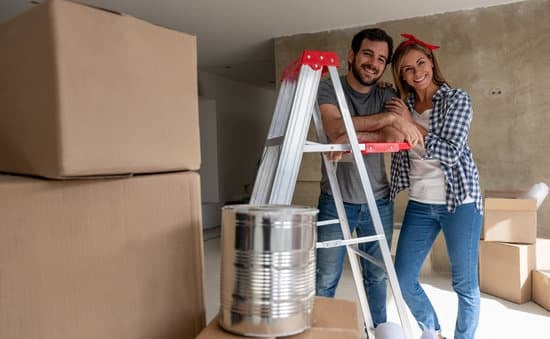Are you wondering how to get money for home repairs and improvements? Owning a home comes with the responsibility of maintaining and improving it over time. Whether it’s fixing a leaky roof, updating outdated appliances, or making your home more energy-efficient, the costs of these projects can add up. In this article, we will explore various options for securing funding to take care of your home repair and improvement needs.
When it comes to maintaining our homes, it’s essential to address repair and improvement needs promptly. Ignoring these issues can lead to larger, more costly problems down the line. Regular maintenance and upgrades can also increase the value of your home, making it a wise investment in the long run. However, many homeowners find themselves facing financial barriers when it comes to funding these essential projects.
In this article, we will discuss different strategies for assessing your home repair and improvement needs, budgeting for these projects, and exploring various funding options available to homeowners. From government assistance programs and grants to loans and DIY tips for cost-effective repairs, there are many avenues you can explore to ensure that your home remains safe, comfortable, and valuable. Let’s dive in and learn how you can secure funds for your home repairs and improvements.
Assessing Your Home Repair and Improvement Needs
When it comes to maintaining and improving your home, it’s important to assess your needs before diving into any repair or renovation project. By taking the time to carefully evaluate the condition of your home, you can prioritize which repairs and improvements are most urgent and allocate your resources effectively.
Evaluating Urgent Repairs
Start by walking through your home and making note of any urgent repairs that need to be addressed. This could include issues such as a leaky roof, faulty electrical wiring, or plumbing problems. Identifying these urgent repairs will help you prioritize where to allocate your funds first.
Identifying Desired Improvements
In addition to urgent repairs, you may also have a list of desired improvements for your home. This could range from cosmetic upgrades like fresh paint or new flooring, to more substantial renovations such as a kitchen remodel or adding a deck. By identifying these desired improvements, you can start to create a vision for how you want to enhance your living space.
Seeking Professional Advice
If you’re unsure about the extent of repairs needed or the cost of certain improvements, consider seeking professional advice from contractors or home inspectors. They can provide valuable insight into the condition of your home and provide estimates for the cost of repairs and improvements. Having this information will be crucial as you start exploring how to get money for home repairs and improvements.
By thoroughly assessing your home repair and improvement needs, you can make informed decisions about where to allocate your resources and plan for securing funding for necessary projects. Taking the time to evaluate the state of your home will set you on the right path towards creating a safe, comfortable, and visually appealing living environment.
Researching and Budgeting for Home Repairs and Improvements
Researching Your Options
Before embarking on any home repair or improvement project, it’s important to thoroughly research your options. Take the time to explore different materials, contractors, and design ideas to ensure that you are making informed decisions. Additionally, research pricing in your area to get a good idea of how much your project will cost. You can use online resources, visit home improvement stores, and speak with experts in the field to gather information.
Creating a Realistic Budget
Once you have gathered all the necessary information, it’s time to create a realistic budget for your home repairs and improvements. Consider every aspect of the project, including materials, labor costs, permits, and any unexpected expenses that may arise.
It’s crucial to be as accurate as possible when estimating costs to avoid running out of funds halfway through the project. If you aren’t sure how much certain aspects of the project will cost, get quotes from multiple contractors or suppliers.
Using Technology for Budgeting
There are various apps and software programs available that can help homeowners with budgeting for home repairs and improvements. These tools allow users to input their project details and receive estimates on costs based on factors such as materials used, square footage, and location. They can also track expenses throughout the project to ensure that everything stays within budget. Utilizing technology in this way can help homeowners stay organized and financially prepared for their home improvement projects.
By thoroughly researching your options and creating a realistic budget using tools or resources available at hand you will ensure that you are well-prepared when it comes time to take action in securing funds for your home repairs and improvements.
Exploring Government Assistance Programs for Home Repairs
Government assistance programs can be a valuable resource when it comes to funding home repairs and improvements. These programs are designed to help homeowners who may not have the financial means to carry out necessary renovations or repairs. Here are some government assistance programs that you can explore:
- Federal Housing Administration (FHA) Title I loan program: This program provides loans for home improvements and repairs, including the installation of energy-efficient systems such as solar panels or geothermal heat pumps.
- USDA Rural Development Single Family Housing Repair Loans and Grants: Available to low-income homeowners in rural areas, this program offers loans and grants for repairing, improving or modernizing homes.
- Department of Veterans Affairs (VA) Home Improvement and Structural Alteration (HISA) grant program: For veterans with service-connected disabilities, the HISA program provides grants for home modifications that are necessary for accessibility or medical treatment.
In addition to these federal programs, many states and local governments also offer assistance programs for home repairs and improvements. These could include grants, forgivable loans, or low-interest loans specifically tailored to meet the needs of homeowners in the area.
When exploring government assistance programs, it’s important to thoroughly research each program’s eligibility requirements, application process, and potential benefits. Some programs may have income limits or specific criteria that must be met in order to qualify for assistance.
By taking advantage of these government assistance programs, eligible homeowners can access the funds needed to make essential repairs and improvements to their homes, ultimately enhancing their quality of life and increasing the value of their property.
Applying for Home Repair Grants and Loans
If you’re faced with the need for home repairs and improvements but lack the funds to cover the costs, applying for home repair grants and loans can be a viable option. There are various programs available at the federal, state, and local levels that provide financial assistance to homeowners in need of making critical repairs or upgrades to their homes.
These programs are designed to help individuals and families maintain safe and healthy living environments while also promoting community development.
One way to start your search for home repair grants and loans is by contacting your local housing or community development office. They can provide information on government-sponsored programs such as the HUD Home Repair and Rehabilitation Program or USDA Single Family Housing Repair Loans & Grants. Additionally, some states offer their own grant and loan programs for home repairs, so it’s important to research what options are available in your area.
When applying for home repair grants and loans, it’s essential to carefully review the eligibility requirements and application process for each program. Most government-funded assistance programs have specific criteria that applicants must meet in order to qualify for funding. This may include income limits, property ownership requirements, or documentation of the necessary repairs. By thoroughly understanding the application process, you can increase your chances of securing financial aid for your home improvement needs.
In addition to government assistance programs, there are also private organizations that offer grants and low-interest loans for home repairs and improvements. These organizations may focus on specific types of repairs, such as energy-efficient upgrades or accessibility modifications for individuals with disabilities. By exploring all available options, you can find the best financial resources to help address your home repair needs without placing an undue financial burden on your household budget.
Utilizing Home Equity Loans or Lines of Credit for Repairs and Improvements
When it comes to funding home repairs and improvements, utilizing home equity loans or lines of credit can be a viable option for homeowners. Home equity is the value of a homeowner’s interest in their property, which can be used as collateral for a loan. This type of financing allows homeowners to tap into the equity they’ve built up in their homes over time, providing them with access to funds for necessary repairs and renovations.
One advantage of using a home equity loan or line of credit is that the interest rates are typically lower than those of other types of loans. This can make it a cost-effective way to finance larger-scale home improvement projects. Additionally, the interest paid on these types of loans may be tax-deductible, making them an attractive option for homeowners looking to save money on their taxes.
It’s important for homeowners to carefully consider the terms and conditions of a home equity loan or line of credit before proceeding. They should assess their ability to repay the loan and ensure they understand the potential risks involved. By leveraging their home equity responsibly, homeowners can access the funds they need to address crucial repairs and enhancements while potentially increasing the value of their property in the long run.
Exploring Alternative Funding Options for Home Repairs and Improvements
When it comes to funding home repairs and improvements, there are several alternative options that homeowners can explore. These alternatives offer different ways to secure funds for the necessary work on your home. Here are some alternative funding options to consider:
1. Personal Loans: Personal loans from banks or credit unions can be used for home repairs and improvements. These loans typically have fixed interest rates and a set repayment schedule, making it easier to budget for the costs.
2. Crowdfunding: Some homeowners have turned to crowdfunding platforms to raise money for their home repair projects. Websites like GoFundMe or Kickstarter allow you to create a campaign and ask friends, family, and even strangers to contribute towards your home improvement goals.
3. Home Repair Grants from Nonprofits: There are nonprofit organizations that offer grants specifically for home repairs and improvements. These grants may have certain eligibility requirements, but they can provide financial assistance for those in need of help with their homes.
4. Renting out a Portion of Your Property: If you have extra space in your home, such as a basement apartment or a guest house, consider renting it out to generate additional income that can be used towards home repairs and improvements.
Exploring these alternative funding options can help homeowners find the financial resources needed to address necessary repairs and make desired improvements without breaking the bank. By considering these options alongside other traditional methods of acquiring funds, homeowners can make informed decisions about how to best finance their home projects.
DIY Tips for Cost-Effective Home Repairs and Improvements
When funds are tight, do-it-yourself (DIY) home repairs and improvements can be a cost-effective way to tackle necessary projects. Whether it’s fixing a leaky faucet, painting a room, or adding new hardware to cabinets, there are numerous DIY tasks that can improve the look and functionality of your home without breaking the bank.
One of the easiest ways to save money on home repairs and improvements is by taking advantage of online tutorials and instructional videos. Websites like YouTube and DIY Network offer a wealth of resources that can walk you through various home improvement projects step by step. By learning how to complete these tasks yourself, you can avoid costly labor fees and take pride in the work you’ve accomplished.
Furthermore, consider joining online forums or community groups where homeowners share their DIY experiences and knowledge regarding home repairs and improvements. These platforms can serve as valuable sources of advice, tips, and tricks from individuals who have successfully completed similar projects in their own homes. Not only can this help save money, but it can also provide a sense of community support as you navigate through your DIY endeavors.
Moreover, another important aspect of cost-effective DIY home repairs is to ensure that you have the right tools for the job. Purchasing quality tools may require an initial investment, but having them on hand will enable you to perform multiple repairs and improvements without having to continuously seek out specialized equipment.
Building up a collection of essential tools will ultimately save you money in the long run by eliminating the need to rent or purchase individual items for each project.
| DIY Tip | Cost-Saving Benefit |
|---|---|
| Utilize Online Tutorials | Avoid costly labor fees |
| Join Online Forums | Access valuable advice from experienced homeowners |
| Invest in Quality Tools | Avoid continuous rentals or purchases for each project |
Conclusion
In conclusion, it is essential to prioritize home repairs and improvements as they not only enhance the aesthetics of your property but also ensure its safety and structural integrity. By regularly assessing your home’s needs, researching and budgeting for repairs, and exploring various funding options, you can effectively address any issues that may arise. There are numerous government assistance programs, grants, loans, and alternative funding options available to homeowners looking to make necessary upgrades to their properties.
When it comes to securing funds for home repairs and improvements, it is crucial to take proactive steps in seeking out financial assistance. Government assistance programs can provide eligible homeowners with the opportunity to receive financial aid for specific repair projects.
Additionally, applying for home repair grants or loans through government agencies or nonprofit organizations can also help cover the costs of necessary renovations. Home equity loans or lines of credit may be viable options for those who have built up significant equity in their homes.
For those who prefer a more hands-on approach or are looking for cost-effective methods, do-it-yourself tips can significantly reduce the expenses associated with home repairs and improvements. With careful planning and research, homeowners can tackle certain projects on their own and save money in the process.
In sum, taking action to secure funds for your home repairs and improvements involves a combination of research, planning, and exploring various funding avenues to ensure that your property is well-maintained and continues to meet your needs for years to come.
Frequently Asked Questions
Who Is Eligible for Government Home Improvement Grant in Wisconsin?
Eligibility for government home improvement grants in Wisconsin typically depends on factors such as income level, homeownership status, and specific grant requirements. Low-income families or individuals may qualify for these grants to make necessary improvements to their homes.
What to Do When Your House Is Falling Apart and You Have No Money?
When faced with a deteriorating home and financial constraints, exploring options such as low-interest home improvement loans, contacting local nonprofits for assistance, or seeking out community development programs can be beneficial. Additionally, prioritizing urgent repairs and seeking out DIY or affordable solutions can help address immediate issues.
What Is a Home Improvement Loan Called?
A home improvement loan is commonly referred to as a renovation loan. These loans are specifically designed to cover the costs of renovations or repairs to a homeowner’s property. Renovation loans often come with favorable terms and interest rates that make them an attractive option for funding home improvement projects.

I’m thrilled to have you here as a part of the Remodeling Top community. This is where my journey as an architect and remodeling enthusiast intersects with your passion for transforming houses into dream homes.





